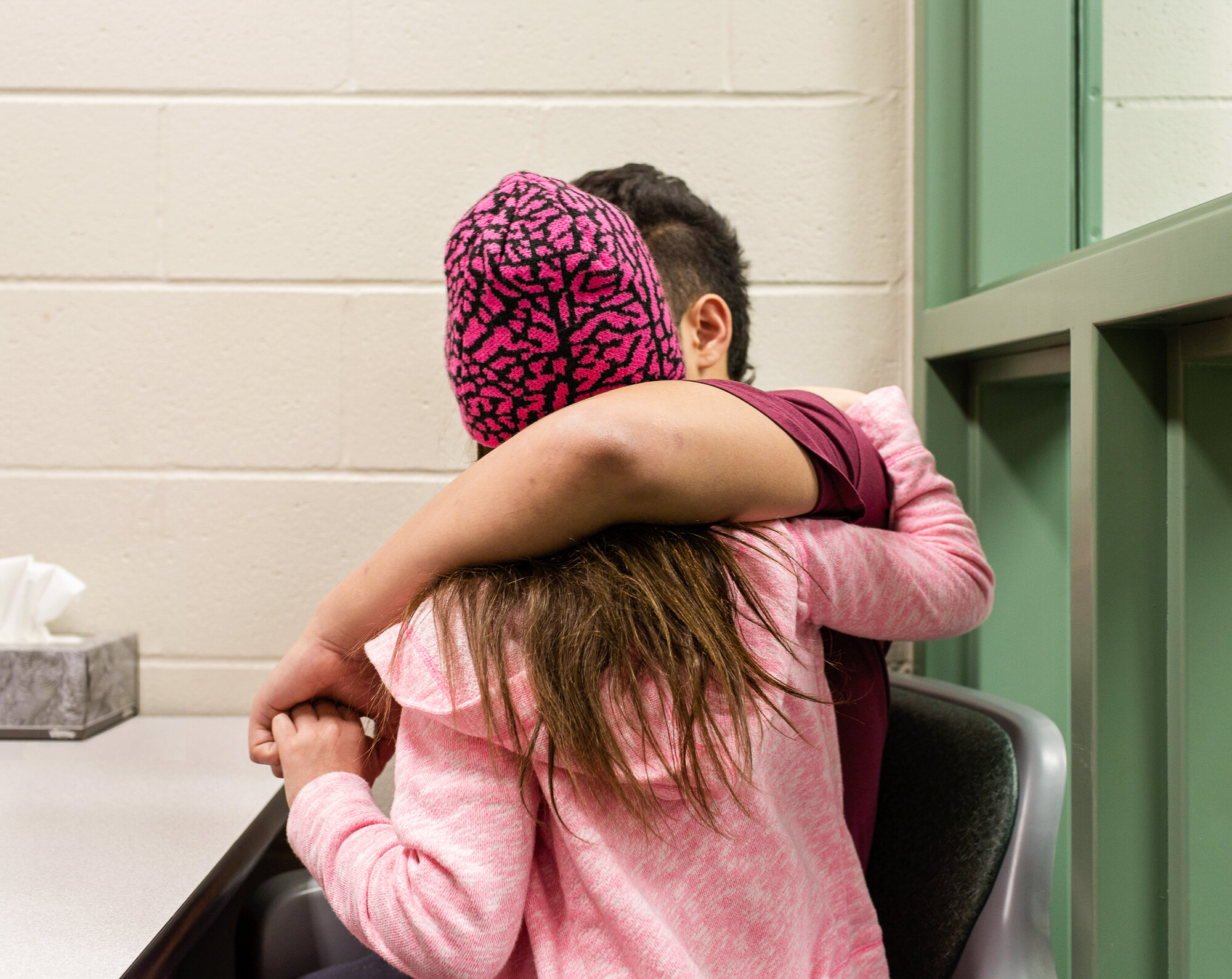The Sitter at TXST
Jan 31–May 1, 2022
Image Gallery


The Sitter at TXST
Jan 31–May 1, 2022
Texas State University, Sabinal Photo Hall Gallery
January 31, 2022 – May 2022
For the Spring 2022 semester Contemporary at Blue Star in collaboration with Texas State University’s Photography Program presents an abridged version of our Summer 2021 exhibition, The Sitter. The exhibition design for the Sabinal Gallery was completed by Angela Gomez, a current TXST art history student.
This Sitter is built around the artist’s impulse to collaborate with and give voice to their subjects, their communities, and experiences. The sitters or subjects transcend the role of model and muse, acting as collaborators or activators, giving access to broader contexts and unraveling complicated stories. In the viewing the work, we begin an investigation into the life of the subjects and often their relationship with the artist. The artworks push far beyond the one-dimensional nature of the internet selfie and engage and challenge long-standing traditions of portraiture. In this collaborative approach, the subjects’ stories are pushed to the forefront with the artist acting as medium between the viewer and the subject. Where artists of the past may have presented viewers with compelling portraits, their subjects may also have been used to construct narratives other than reality, or left viewers to write their own stories– i.e. Dorthea Lange’s Migrant Mother or Manet’s barmaid of A Bar at the Folies-Bergère. In many cases, the subjects and their personal stories had little agency and artists did not intend for these details to shape how the work is seen.
Many of the artists in this exhibition include their subjects’ voices and narratives directly as a part of the work. They utilize captions, handwriting, and even spoken, audible components for the portraits. David Johnson’s photo essay Wig Heavier Than a Boot is a multi-year project in collaboration with poet Philip Matthews. The project incorporates portraits, poems, and video works, to follow Philip’s practice of inhabiting a drag consciousness, Petal, as means to access creativity and as an expression of identity. What additionally unfolds is the performance of identity as it relates to place, time, and collaboration with the photographer. Phillip and Petal are uncovered, and an interconnected voice emerges in poems and photographs.
Natan Dvir’s documentary-rooted project Eighteen is a series of portraits of Arab youth photographed when they are 18, a defining and transitional time in life. The complexities that underline the project include the political conflict present in the everyday lives of the photographer and his subjects, situating them in opposition to one another. The photographed lay bare these realities through the narrative accounts accompanying the work. The accounts are in the first person, directly from the subjects. The project explores the act of opening conversations, active listening, and photography as witness. It opens a space to begin building relationships while breaking socially conditioned stereotypes and misconceptions.
Some artists in the exhibition employ storytelling and character building as tactics for distilling the essences of people they’ve known and experiences they’ve had. In the video work Somebody’s Been Sitting in My Chair, Somebody’s Been Sleeping in My Bed, La Vaughn Belle utilizes the narrative framework of fairy tales for a retelling of Goldilocks and the Three Bears. In Belle’s version we find the artist moving through the “great house” of a colonial plantation in the Virgin Islands, the artist’s home. In this and other works by Belle the artist challenges colonial hierarchies and undoes them by generating counter narratives and actions. She uses the material artifacts of colonialism to do so, like great house architecture. Belle’s interventions surface the tension that remains from the history inscribed in these objects.
In Belle’s Planter’s Chair polaroids the artist invited community members to sit for an impromptu portrait, with each sitter having control over their pose and expression. The planter’s chair puts oppressive power on full display, with long arms that doubled as footrests for a servant to assist in the removal of the planter’s boots. The throne like chair when occupied in the contemporary moment is a subversive gesture, but only when its history is acknowledged.
Two photographs from Zora J Murff’s series Corrections depict youth in the juvenile system. The body of work was made while Murff worked as a Tracker for Linn County Juvenile Detention and Diversion Services in Cedar Rapids, Iowa. In this body of work in its entirety, Murff builds a representation of this experience through environmental, still life, and portrait photography, as well as fragments of letters. No clear view of any subject’s face is given to the viewer, situating us voyeuristically while letting some anonymity of the subject remain. A tone of introspection is present from both photographer and subject. As Murff grapples with his role in the lives of these youth through the work, he also brings to surface larger questions around the context and circumstances that influence them, and the misalignment of intentions and outcomes in the juvenile system.
Each artist’s impulse to document people with a closeness, whether this is culturally, in a familial sense, or themselves through self-portraiture, is intertwined with care and responsibility for the stories told. The intimate quality inherent in much of the work provides a sense of truth and accuracy through this proximity. The most compelling of portraits reach for some truth, for vulnerability, and for a moment when an interior part of a person is witnessed and documented by the artist and shared with the viewer.
– Jacqueline Saragoza McGilvray
Curator & Exhibitions Manager